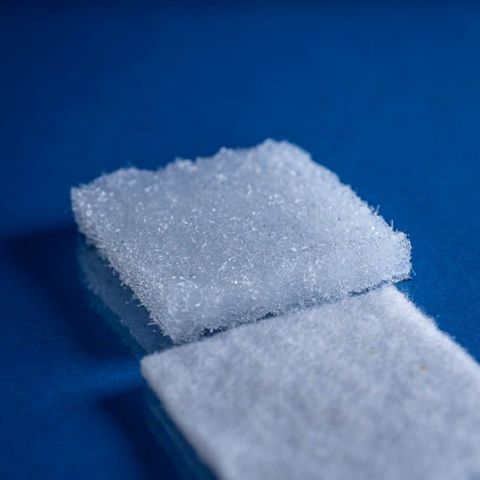The company, of Grimsby, UK, says that its SAF fabrics absorb water as well as, or even better than, bentonite-based geotextiles, which are made by sandwiching the clay mineral sodium bentonite – a natural sealant that swells on contact with water – between a woven and a nonwoven fabric, and then needlepunching the layers together. Further, TAL claims that its SAF fabrics are light in weight, which makes them easier and more cost-effective to ship and install than conventional alternatives. The SAF-containing nonwovens are also cleaner because the fibres are fully integrated within the fabric, so they do not create dust or shed fibres, which also helps to ensure that they create a consistent water-barrier.
TAL has conducted basic tests to show how fabrics made from its SAFs, which can absorb up to 200 times their own weight in water, even under pressure, perform in comparison with standard bentonite clay liners. Both fabrics were placed in the same test rig, and equal amounts of water were applied. The water flowed through the bentonite clay fabric, but the SAF fabric absorbed and retained the water instantaneously. In industry-standard comparison tests conducted by an external laboratory, the SAF fabrics performed just as well as the bentonite clay samples.
TAL's Commercial Director, Paul Rushton, says: "We are not trying to replace bentonite clay fabrics; we see SAF as an alternative, or even a complementary option, that could bring added value in the right applications. There is also a potential benefit in producing hybrid systems of both bentonite and SAF to maximise transportation and installation costs. Right now, we are looking to connect with companies who already manufacture fabrics in this space and might be interested in working with our technology."
TAL's SAFs are already used in cables and in structural waterproofing membranes. Yarns and tapes made with SAFs are installed inside cables and, if the outer sheath gets damaged, they absorb water and swell to block any further ingress. Needlepunched nonwoven fabrics made with SAFs are also used by customers as a secondary protection layer in structural waterproofing membranes, where they provide a thin and cost-effective extra layer of protection against below-grade water-entry. When bonded to a high-density polyethylene (HDPE) waterproof membrane, the integrated SAFs will swell upon contact with groundwater if the membrane is breached in any way.

